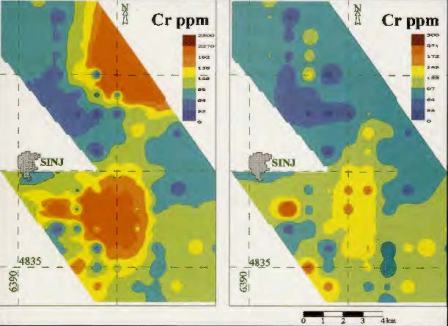Sharply-Topped Alluvial Gravel Sheets in the Palaeogene Promina Basin (Dinarides, Croatia)
Main Article Content
Abstract
The upper part of the Promina Beds at their western extent is represented by two alluvial units: the Kunovac Beds and the Upper Alluvial Unit. The Kunovac Beds contain a high proportion of fine-grained sediments, and generally lacks debris flow deposits. The principal architectural components of the Kunovac Beds are (1) complex (multilateral, multi-storey) gravel-dominated sheets, which originated by the advance of mobile-channel belts, and were terminated by sudden abandonment, (2) smaller heterogeneous gravelly-sandy sheets, which originated in fluvial belts from a combination of sheet flows and channelized flows, (3) small isolated ribbons reflecting the filling of small channels, and (4) floodplain mudstones and sandstones.
The basic style by which the Kunovac Beds, as well as the most part of the Promina alluvium were built up are the repeated advances and abandonments of the alluvial belts, and related stacking of coarse-grained sheets and floodplain deposits. The most important factors responsible for the dominance of this sheet-like geometry are high sediment supply and high aggradation and subsidence rates.
Deposition of the Kunovac Beds occurred on alluvial plains, situated between the basin-margin proximal alluvium (including fans) and marginal-marine zone of the Promina Basin. The alluvial Promina Beds represent a transverse type of basin-fill pattern, whereas the deepest portion of the basin experienced longitudinal palaeotransport.
The basic style by which the Kunovac Beds, as well as the most part of the Promina alluvium were built up are the repeated advances and abandonments of the alluvial belts, and related stacking of coarse-grained sheets and floodplain deposits. The most important factors responsible for the dominance of this sheet-like geometry are high sediment supply and high aggradation and subsidence rates.
Deposition of the Kunovac Beds occurred on alluvial plains, situated between the basin-margin proximal alluvium (including fans) and marginal-marine zone of the Promina Basin. The alluvial Promina Beds represent a transverse type of basin-fill pattern, whereas the deepest portion of the basin experienced longitudinal palaeotransport.
Downloads
Download data is not yet available.
Article Details
Issue
Section
Original Scientific Papers
Authors have copyright and publishing rights on all published manuscripts.

